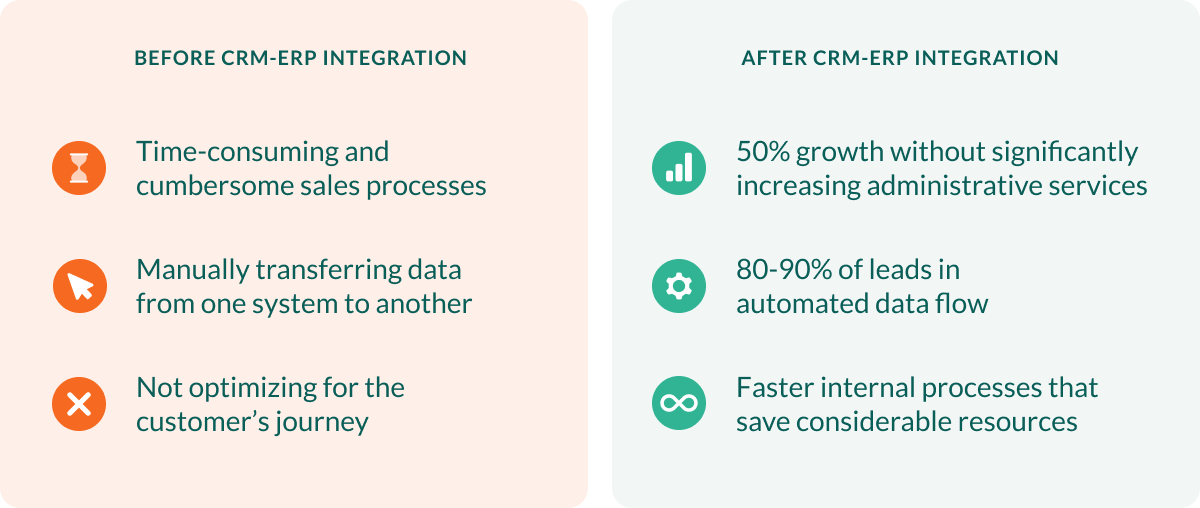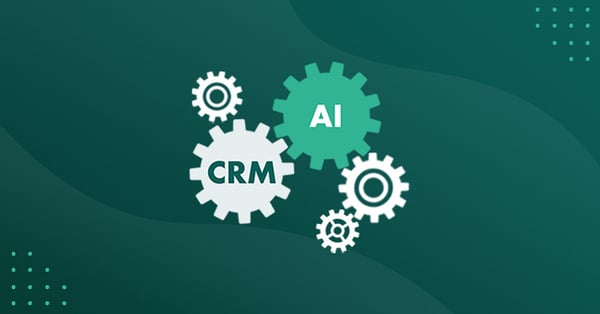Companies that integrate their Customer Relationship Management (CRM) and Enterprise Resource Planning (ERP) systems gain a significant strategic advantage. This integration eliminates operational friction and accelerates growth across the organization.
According to Lars Engbork, CEO of SuperOffice, this development emerges consistently in successful business transformations across Europe.
"For over two decades, I've had the opportunity to lead both CRM and ERP companies, working closely with thousands of mid-sized businesses across Europe," says Engbork. "This pattern of behavior stands out in every successful business transformation: integration between front and back-office systems."
When CRM and ERP systems operate in isolation, the consequences extend far beyond technical inefficiency. Organizations experience data silos, delayed decision-making, and missed opportunities that directly impact the bottom line.
According to Forbes, a study in 2021 conducted by IBM shows a $3.1 trillion loss annually in revenue and productivity due to data silos. The biggest risk, however, is losing the confidence of a customer.
Engbork illustrates this with a common scenario: "Picture this: a sales rep walks into a customer meeting and doesn't know if the last order was shipped or whether there's an unpaid invoice. It's not just problematic. It's a failure in customer experience.”
The operational chaos created by disconnected systems can be seen in many different scenarios, The common thread among market leaders such as:
- Sales teams lacking visibility into product availability and pricing
- Finance departments processing invoices with delays
- Operations teams not being able to forecast demand accurately
- Leadership making decisions based on incomplete information
These challenges not only create bad employee experiences, but they also undermine business performance. Teams waste valuable time searching for information, rather than creating value.
"When teams don't have access to the same data, they waste time chasing clarity instead of closing deals," notes Engbork.
When organizations successfully integrate their CRM and ERP systems, the impact is immediate. "The moment teams share a single source of truth, everything improves sales, support, decision-making. You can feel the shift," Engbork observes.
This integration helps create organizational alignment. Departments stop functioning as separate entities and begin operating as a unified team centered around the customer.

Case Study: Integration in action
A mid-sized wholesale company illustrates the transformative power of CRM-ERP integration. Before integration, the company struggled with common challenges:
- Time-consuming and cumbersome sales processes
- Manually transferring data from one system to another
- Not optimizing for the customer’s journey
After implementing an integrated solution, the results were substantial:
- 50% growth without significantly increasing administrative services
- 80-90% of leads in automated data flow
- Faster internal processes that save considerable resources

This success story demonstrates that integration isn't merely a technical achievement; it can transform how teams collaborate.
"You can't make confident business decisions when half your data is locked away in a system your team can't access," Engbork emphasizes.
Integration is more than a technical project
Technology is rarely the obstacle to successful integration between CRM and ERP systems. The real challenges involve data quality, unclear objectives, and adoption issues. There are three key steps that drive the project:
- Data cleansing must precede integration: Integration will amplify data, whether accurate or flawed. Organizations should eliminate duplicates, standardize fields, and align records across systems before proceeding.
- Business outcomes should drive the project: Integration itself isn't the goal; improved business outcomes should be. Focus should remain on enhanced sales cycles, faster payments, and more effective decision-making.
- User involvement is critical: Training and communication significantly impact success. Organizations must demonstrate how integration simplifies work rather than complicating it.
"Integration is a one-time project. Alignment is a long-term advantage," Engbork notes.
CRM-ERP integration transcends IT considerations; it represents a strategic decision affecting every aspect of business performance, from sales effectiveness to service delivery to growth capacity.
For organizations ready to eliminate silos and align their teams, the path to integration has never been more accessible or more critical to competitive advantage. SuperOffice offers standard integrations to all major ERP systems, get in touch to know more.




